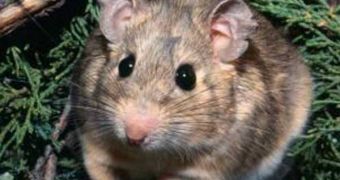Neotoma lepida, a species more commonly known as the woodrat, has been living for thousands of years on whatever plants it can find on the ground. Millennia ago, it used to consume the toxic parts of juniper, a plant that is renowned for the toxins it contains. As the climate of the southwestern part of the United States, its original habitat, changed more than 18,700 years ago, the animal had to adapt to another food source. The species picked creosote shrubs, a plant that is even more toxic than juniper. However, it would appear that this minor detail does not stop the animal from surviving.
The aforementioned climate change that took place all those thousands of years ago essentially created the Mojave Desert, a place that is inhospitable by today's standards. The only region that still remained covered in juniper was the nearby Great Basin, where woodrats were also found in abundance. So, researchers started to wonder how it was that the small rodents managed to survive. In a research designed to find out just that, University of Utah in Salt Lake City expert Elodie Magnanou and colleagues caught rats from both regions, and fed them diets rich in juniper and shrubs, respectively, for several days.
The team then looked at messenger RNA molecules, extracted from the livers of both types of rats, in order to compare them and see which genes were expressed in processing the food. In the investigation, the scientists used molecular tools known as microarrays, which are able to quickly and accurately tell the differences between genetic actions in individuals of the same species. For this particular study, the microarray specific to Rattus norvegicus, the common lab rat, was used on the rodent's wild relative. Details of the finds appear in the latest issue of the respected scientific journal Molecular Ecology.
The team reports that the main difference between the two groups of rats was found within 24 genes that were coded by the Mojave Desert variety, as opposed to their Great Basin neighbors. These particular genes were found to be responsible for creating enzymes that had the ability to break down the toxic compounds in creosote shrubs, thus allowing the rodent to process the seemingly-inedible food. The same genes were not expressed in the Great Basin variety, which still thrives on juniper, LiveScience informs.

 14 DAY TRIAL //
14 DAY TRIAL //